Related Research Articles

The Australian Labor Party (ALP), also simply known as Labor, is the major centre-left political party in Australia, one of two major parties in Australian politics, along with the centre-right Liberal Party of Australia. It has been in Opposition in the federal parliament since the 2013 election. The ALP is a federal party, with political branches in each state and territory. They are currently in government in Victoria, Queensland, Western Australia, South Australia, the Australian Capital Territory, and the Northern Territory. The Labor Party is the oldest political party in Australia.
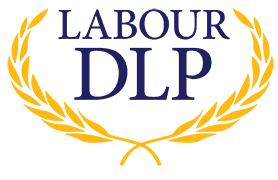
The Democratic Labour Party (DLP), formerly the Democratic Labor Party, is an Australian political party. It broke off from the Australian Labor Party (ALP) as a result of the 1955 ALP split, originally under the name Australian Labor Party (Anti-Communist), and was renamed the Democratic Labor Party in 1957. In 1962, the Queensland Labor Party, a breakaway party of the Queensland branch of the Australian Labor Party, became the Queensland branch of the DLP.

Archibald Henry Peake was an Australian politician. He was Premier of South Australia on three occasions: from 1909 to 1910 for the Liberal and Democratic Union, and from 1912 to 1915 and 1917 to 1920 for its successor, the Liberal Union. He had also been Treasurer and Attorney-General in the Price-Peake coalition government from 1905 to 1909.
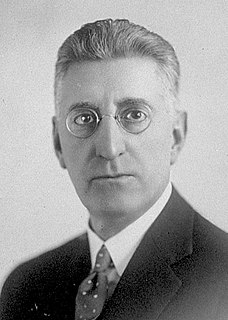
Reginald Walter Darcy Weaver was an Australian conservative parliamentarian who served in the New South Wales Legislative Assembly for 28 years. Serving from 1917 in the backbenches, he entered the cabinet of Thomas Bavin in 1929 as Secretary for Mines and Minister for Forests until he returned to opposition in 1930. Following the success of the United Australia Party in the 1932 election, Weaver returned as the Secretary for Public Works and Minister for Health in the Stevens ministry.
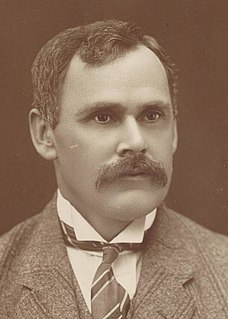
George Cann was an Australian politician who served in both the Parliament of Australia and the Parliament of New South Wales. At state level he served as a minister in the governments of Jack Lang during the 1920s. He was a miner before entering politics.
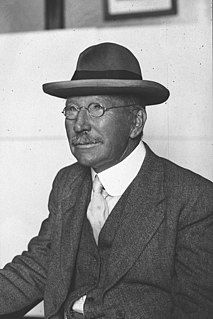
Arthur Hill Griffith was a politician, teacher and patent attorney in New South Wales, Australia. He was a member of the New South Wales Legislative Assembly from 1894 until 1917 and held a number of ministerial positions in the Government of New South Wales. He was a member of the Labor Party.
The Industrial Socialist Labor Party, Industrial Labor Party and the Independent Labor Party were short lived socialist political parties in Australia in 1919 and the early 1920s. The Industrial Socialist Labor Party was founded by radical socialist members of the industrial wing of the Australian Labor Party (ALP), at a time when the ALP's socialist ideology was a matter of intra-party dispute. It was closely aligned with the Industrial Workers of the World (IWW) and the One Big Union (OBE) movement.
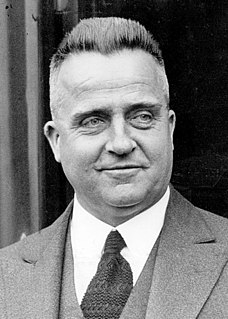
The 1938 New South Wales state election was held on 26 March 1938. This election was for all of the 90 seats in the 32nd New South Wales Legislative Assembly and was conducted in single member constituencies with compulsory preferential voting.
Walter Ernest Wearne was an Australian politician and member of the New South Wales Legislative Assembly from 1917 until 1930. He was initially elected as an Independent but subsequently formed the Progressive Party of which he was the leader until it split into urban and rural wings in 1921. His urban wing subsequently amalgamated with the Nationalist Party of which he was the deputy leader in the NSW Parliament.

Alfred Edden was a politician, trade union organiser and coal miner in New South Wales, Australia. He was a member of the New South Wales Legislative Assembly for more than 28 years, including 3 as Secretary for Mines. He was a foundation member of the Labor Party but left the party twice, in 1891 over the question of the solidarity pledge and was expelled in 1916 over the question of conscription.
The Democratic Party was a short-lived, urban, conservative political party which was active in New South Wales, Australia between November 1943 and 1945. The Democratic Party was formed in November 1943 by the union of the United Australia Party (UAP) in New South Wales and the Commonwealth Party. It was one of the main conservative parties in New South Wales and contested the 1944 state election as a coalition with Country Party.

The 1944 New South Wales state election was held on 27 May 1944. It was conducted in single member constituencies with compulsory preferential voting and was held on boundaries created at a 1940 redistribution. The election was for all of the 90 seats in the Legislative Assembly.

The 1956 New South Wales state election was held on 3 March 1956. It was conducted in single member constituencies with compulsory preferential voting and was held on boundaries created at a 1952 redistribution. The election was for all of the 94 seats in the Legislative Assembly.
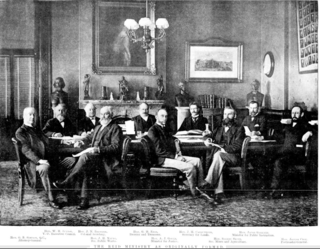
The Reid ministry was the 28th ministry of the Colony of New South Wales, and was led by the 12th Premier, George Reid. The title of Premier was widely used to refer to the Leader of Government, but was not a formal position in the government until 1920. Instead the Premier was appointed to another portfolio, usually Colonial Secretary but on this occasion Reid took the portfolio of Colonial Treasurer until July 1899 and then Attorney General.

The Storey ministry was the 37th ministry of the New South Wales Government, and was led by the 20th Premier, John Storey.
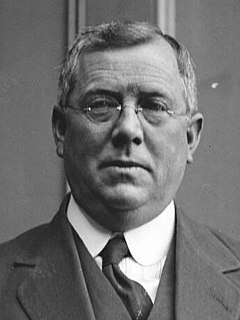
The Dooley ministry (1921–1922) or the Second Dooley ministry was the 40th ministry of the New South Wales Government, and was led by the 21st Premier, James Dooley.
Cyril Joseph Fallon was an Australian politician.
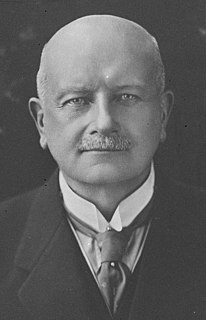
Sir David Storey was an Irish-born Australian politician and businessman. He was a member of the New South Wales Legislative Assembly from 1894 to 1920 and the New South Wales Legislative Council from 1920 until his death in 1924, representing the Free Trade Party and its successors the Liberal Reform Party and Nationalist Party. He was Minister of Public Health in the Nationalist ministry of William Holman in 1919-20.

The 1920 New South Wales state election was held on 20 March 1920. The 24th parliament of New South Wales was dissolved on 18 February 1920 by the Governor, Sir Walter Edward Davidson, on the advice of the Premier William Holman. The election was for all of the 90 seats in the 25th New South Wales Legislative Assembly, and it was the first to be conducted with multi-member electorates, using the Hare-Clark single transferable vote system.
The Socialist Labor Party was a socialist political party of Australia that existed from 1901 to the 1970s. Originally formed as the Australian Socialist League in 1887, it had members such as George Black, New South Wales Premier William Holman and Prime Minister Billy Hughes.
References
- ↑ Lyons, Mark (1981). "Fallon, Cyril Joseph (1887 - 1948)". Australian Dictionary of Biography . Melbourne University Press. ISSN 1833-7538 . Retrieved 18 June 2009– via National Centre of Biography, Australian National University.